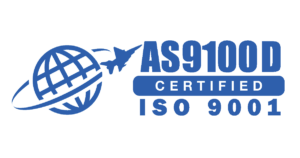Timeline
A History of Service and Milestones
1919
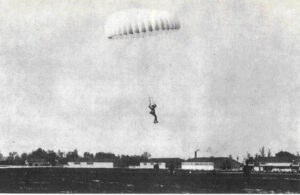
Leslie Irvin makes the first free fall parachute descent; the Irving Airchute Company is formed in Buffalo, NY.
1922

Leslie Irvin forms “Caterpillar Club” for airmen saved by a parachute.
1928
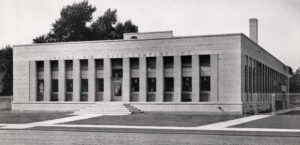
Leslie Irvin opens a factory dedicated solely to the production of Irvin parachutes in Buffalo, NY.
1940
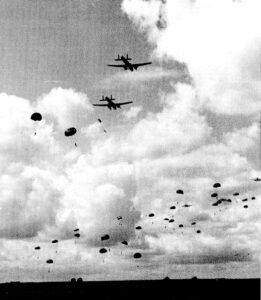
Irvin and GQ collaborate to produce the X-type Paratroop Parachute Assembly. This assembly, is used throughout WWII and for 20 years beyond.
1951
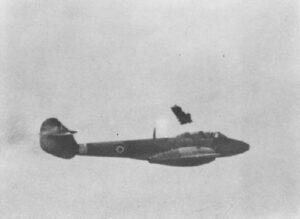
Martin-Baker, in collaboration with Irvin, develops the first autonomous pilot seat ejection system.
1960
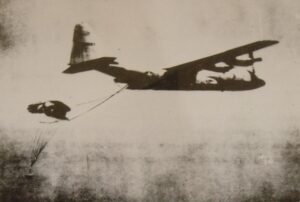
First aerial recovery of a space capsule launched from an orbiting satellite (Discoverer 13) uses an Irvin parachute recovery system.
1963
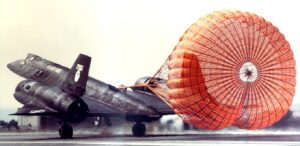
Landing brake-parachute is developed by Irvin for SR-71.
1965
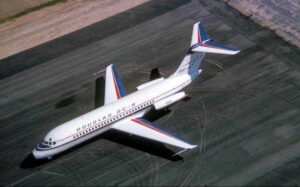
Irvin’s first mortar deployed Spin/Stall Parachute Recovery System is used on DC-9 development aircraft.
1976
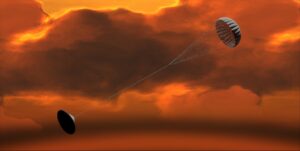
Irvin develops and qualifies parachute system for the NASA Pioneer Venus program.
1978
1983
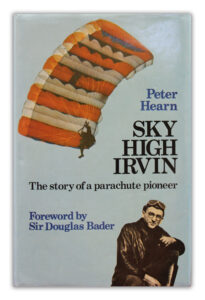
Peter Hearn publishes “Sky High Irvin, The Story of a Parachute Pioneer”, a book recounting Irvin’s contributions to the parachute industry.
1991
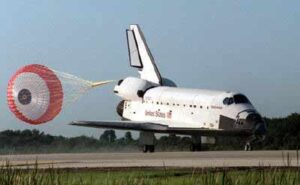
Space Shuttle Endeavor successfully lands using an Irvin brake-parachute
1996
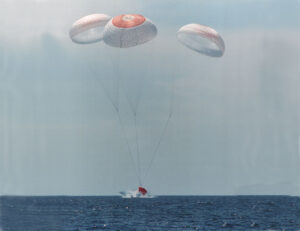
Irvin designs and tests a cluster of 3 Ringsail parachutes to recover the Boeing EELV Concept’s 20,000 lb propulsion module demonstrating the technology to successfully return the first stage rocket engine to a water landing for subsequent recovery, and refurbishment and reuse.
1998
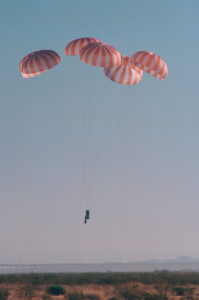
World-record largest parachute cluster flight for the Kistler K-1 development using six 156 ft ringsail parachutes.
1999
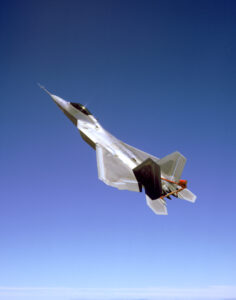
F-22 development aircraft successfully conducts flight tests with Irvin’s Spin/Stall Parachute Recovery System.
2001
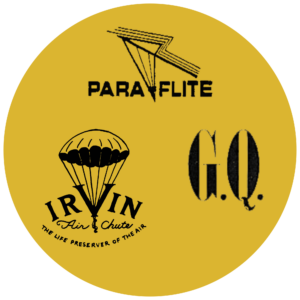
British investment group, Alchemy Partners, purchases Irvin – putting Irvin, Para-Flite, and GQ Parachutes under the same umbrella, later known as Airborne Systems.
2003
2005

Airborne Systems hosts the first Airborne Days in Eloy, Arizona
2005
2006
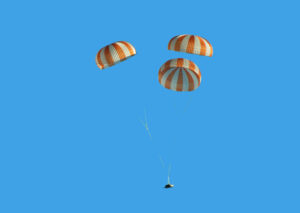
Airborne Systems is awarded development of parachute program for NASA Orion spacecraft replacing the space shuttle in 2010.
2006
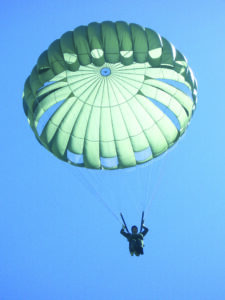
Airborne Systems competed and won the design competition for the MC-6 as the replacement for MC-1 for the U.S. Army. Airborne Systems was one of four suppliers awarded a 5 year IDIQ contract in 2006 for the MC-6.
2007
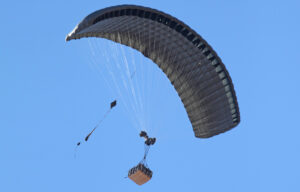
U.S. Army Selects Airborne Systems DragonFly® and FireFly® Systems for self-guided parachutes.
2008
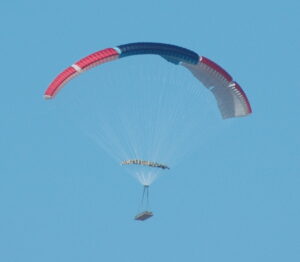
Successful test of the “GigaFly” sets the world record for the largest ram-air canopy carrying the heaviest weight ever flown (40,000 lb).
2010
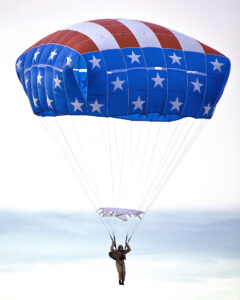
10,000th unit produced of the T-11 systems replacing the U.S. Army legacy T-10.
2011
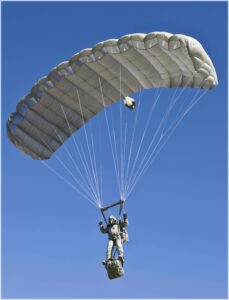
U.S. Army selects the Intruder® system to replace the legacy MC-4/MC-5
2012
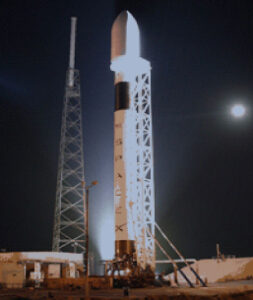
Space X – Dragon spacecraft recovery from first commercial flight docking on the International Space Station.
2012
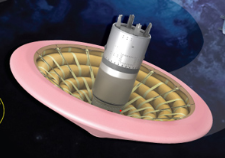
IRVE-3 successful inflatable heat shield test
2012
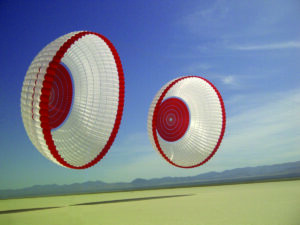
Boeing CST-100 successful drop test
2015

Blue Origin successful first flight
2018
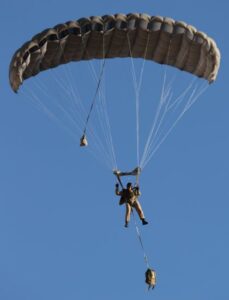
The United States Marine Corps selects the Edge Multi-Mission Parachute System as their replacement for their legacy system.
2018
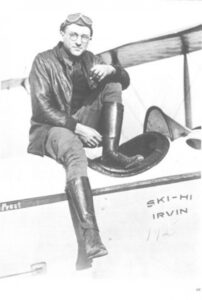
Leslie Irvin is inducted into the Skydiving Hall of Fame
2019
2021
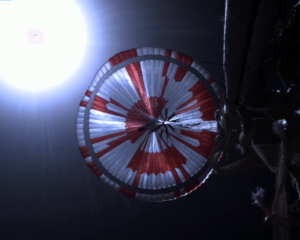
Mars Perseverance Rover safely lands on the surface of Mars using a parachute designed and manufactured by Airborne Systems. Dare Mighty Things.
2022
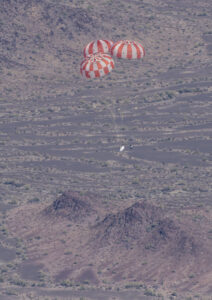
NASA launches Artemis 1 with the Orion capsule for moon and deep space missions containing 11 parachutes designed and manufactured by Airborne Systems to assist with a gentle landing upon its return to earth.
2022
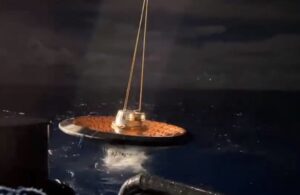
NASA LOFTID program recently demonstrated technology using Airborne Systems’ inflatable hypersonic decelerator that withstood re-entry back to earth, with application for future Mars missions.
2022
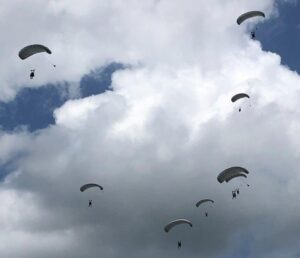
USMC awards Airborne Systems a multi-year contract to train approx. 400 Military Free Fall Parachutists a year for the next 5 years.
2023

Airborne Systems returns with Airborne Days VIII after a 4-year hiatus.
2023
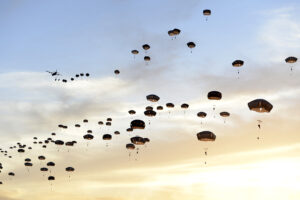
Airborne Systems celebrates 50,000 T-11 parachute systems worldwide

